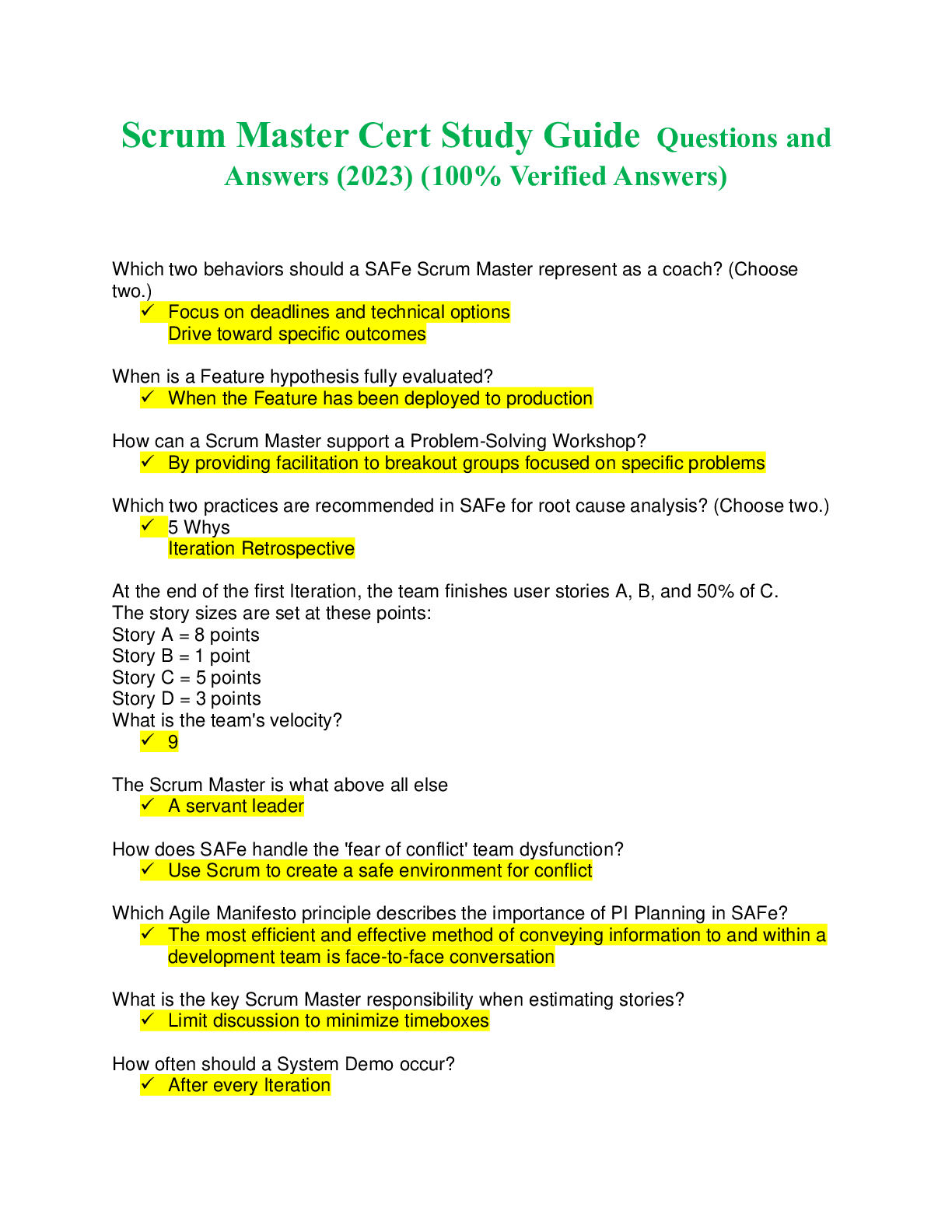Chapter 1 EMT BF Exam (100% Verified Answers)
Document Content and Description Below
1. Which of the following descriptions MOST accurately portrays emergency medical services (EMS)? A. a vast network of advanced life support (ALS) providers who provide definitive emergency care in t... he prehospital setting B. a team of health care professionals who are responsible for providing emergency care and transportation to the sick and injured C. a system composed exclusively of emergency medical responders (EMRs) and emergency medical technicians (EMTs) who are responsible for providing care to sick and injured patients D. a team of paramedics and emergency physicians who are responsible for providing emergency care to critically injured patients Answer: B Question Type: General Knowledge Page: 5 2. The standards for prehospital emergency care and the individuals who provide it are typically regulated by the: A. state office of EMS. B. regional trauma center. C. American Heart Association. D. National Registry of EMTs. Answer: A Question Type: General Knowledge Page: 5 3. An EMS provider who has extensive training in various aspects of advanced life support (ALS) is called a(n): A. EMT. B. paramedic. C. advanced EMT (AEMT). D. EMR. Answer: B Question Type: General Knowledge Page: 6 4. EMT training in nearly every state meets or exceeds the guidelines recommended by the: A. National Registry of EMTs. B. individual state's EMS protocols. C. National Association of EMTs. D. National Highway Traffic Safety Administration (NHTSA). Answer: D Question Type: General Knowledge Page: 6 5. According to the National EMS Scope of Practice Model, an EMT should be able to: A. assist a patient with certain prescribed medications. B. insert a peripheral intravenous (IV) line and infuse fluids. C. administer epinephrine via the subcutaneous route. D. interpret a basic electrocardiogram (ECG) rhythm and treat accordingly. Answer: A Question Type: General Knowledge Page: 6 6. Cardiac monitoring, pharmacological interventions, and other advanced treatment skills are functions of the: A. EMT. B. paramedic. C. AEMT. D. EMR. Answer: B Question Type: General Knowledge Page: 6 7. The criteria to be licensed and employed as an EMT include: A. demonstration of the ability to lift and carry at least 200 pounds. B. proof of immunization against certain communicable diseases. C. a minimum of 60 college credit hours that focus on health care. D. successful completion of a recognized bystander cardiopulmonary resuscitation (CPR) course. Answer: B Question Type: General Knowledge Page: 8 8. If an EMT candidate has been convicted of a felony or misdemeanor, he or she should: A. wait at least 24 months before taking another state-approved EMT class. B. send an official request to the National Registry of EMT (NREMT) to seek approval to take the EMT exam. C. recognize that any such conviction will disqualify him or her from EMT licensure. D. contact the state EMS office and provide them with the required documentation. Answer: D Question Type: General Knowledge Page: 8 9. Which of the following statements regarding the Americans With Disabilities Act (ADA) of 1990 is correct? A. The ADA only applies to individuals with a diagnosed and well-documented physical disability. B. The requirements to successfully complete an EMT program are different for those who are disabled. C. The ADA prohibits employers from failing to provide full and equal employment to the disabled. D. According to the ADA, EMT candidates with a documented disability are exempt from taking the NREMT exam. Answer: C Question Type: General Knowledge Page: 8 10. As an EMT, you may be authorized to administer aspirin to a patient with chest pain based on: A. the patient's condition. B. your local EMS protocols. C. an order from a paramedic. D. the transport time to the hospital. Answer: B Question Type: General Knowledge Page: 10 11. According to the National EMS Scope of Practice Model, an EMT would require special permission from the medical director and the state EMS office in order to: A. perform blood glucose monitoring. B. apply and interpret a pulse oximeter. C. use an automatic transport ventilator. D. give aspirin to a patient with chest pain. Answer: A Question Type: General Knowledge Page: 10 12. Which of the following statements regarding the NREMT is correct? A. The NREMT is a governmental agency that certifies EMTs. B. EMS training standards are regulated by the NREMT. C. The NREMT is the exclusive certifying body for EMTs. D. The NREMT provides a national standard for EMS testing. Answer: D Question Type: General Knowledge Page: 11 13. Which of the following scenarios does NOT involve the administration of ALS? A. a 48-year-old patient whose airway is secured with a multilumen device B. a 53-year-old patient who is given glucagon for significant hypoglycemia C. a 61-year-old trauma patient whose chest is decompressed with a needle D. a 64-year-old cardiac arrest patient who is defibrillated with an automated external defibrillator (AED) Answer: D Question Type: General Knowledge Page: 11-12 [Show More]
Last updated: 9 months ago
Preview 1 out of 14 pages
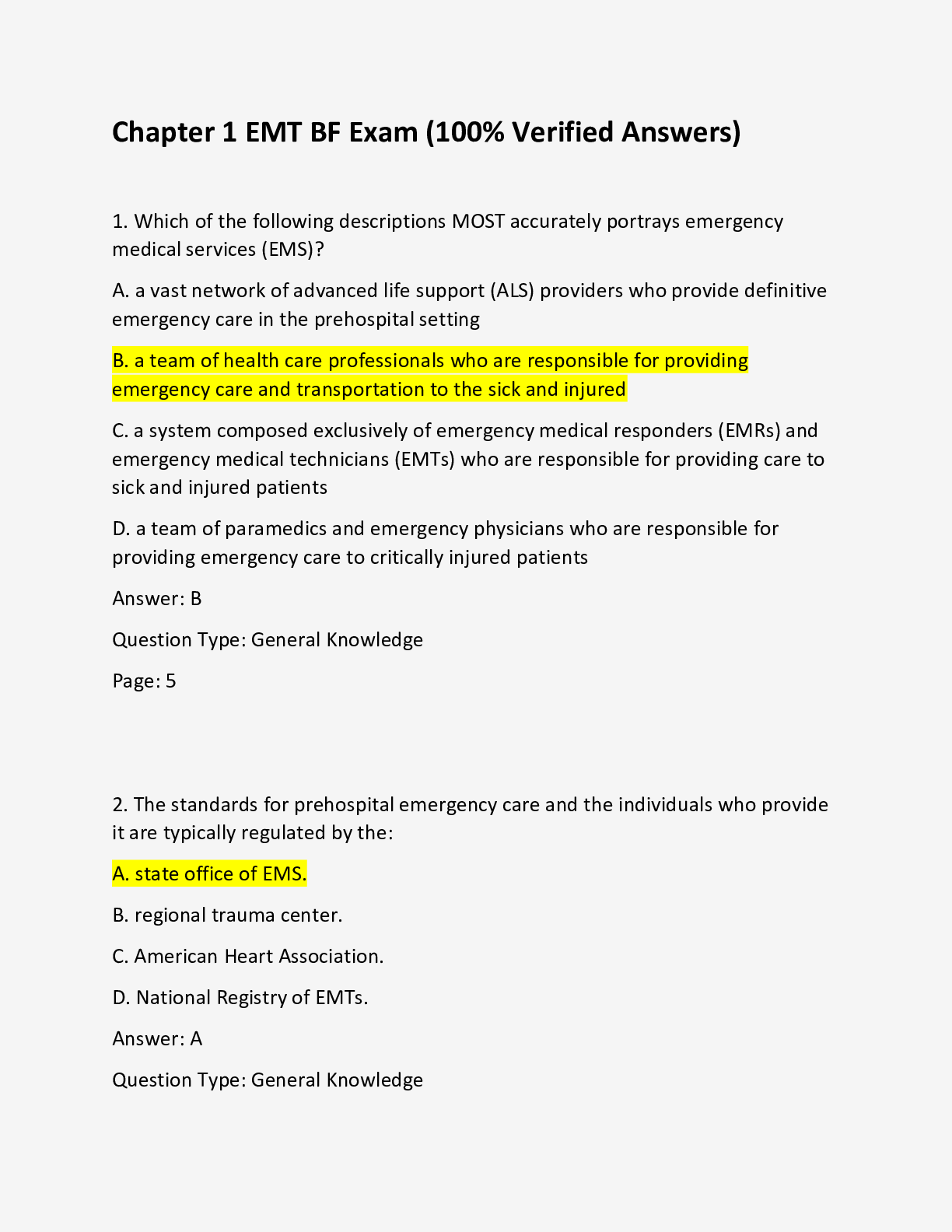
Reviews( 0 )
Document information
Connected school, study & course
About the document
Uploaded On
Jul 24, 2023
Number of pages
14
Written in
Additional information
This document has been written for:
Uploaded
Jul 24, 2023
Downloads
0
Views
76




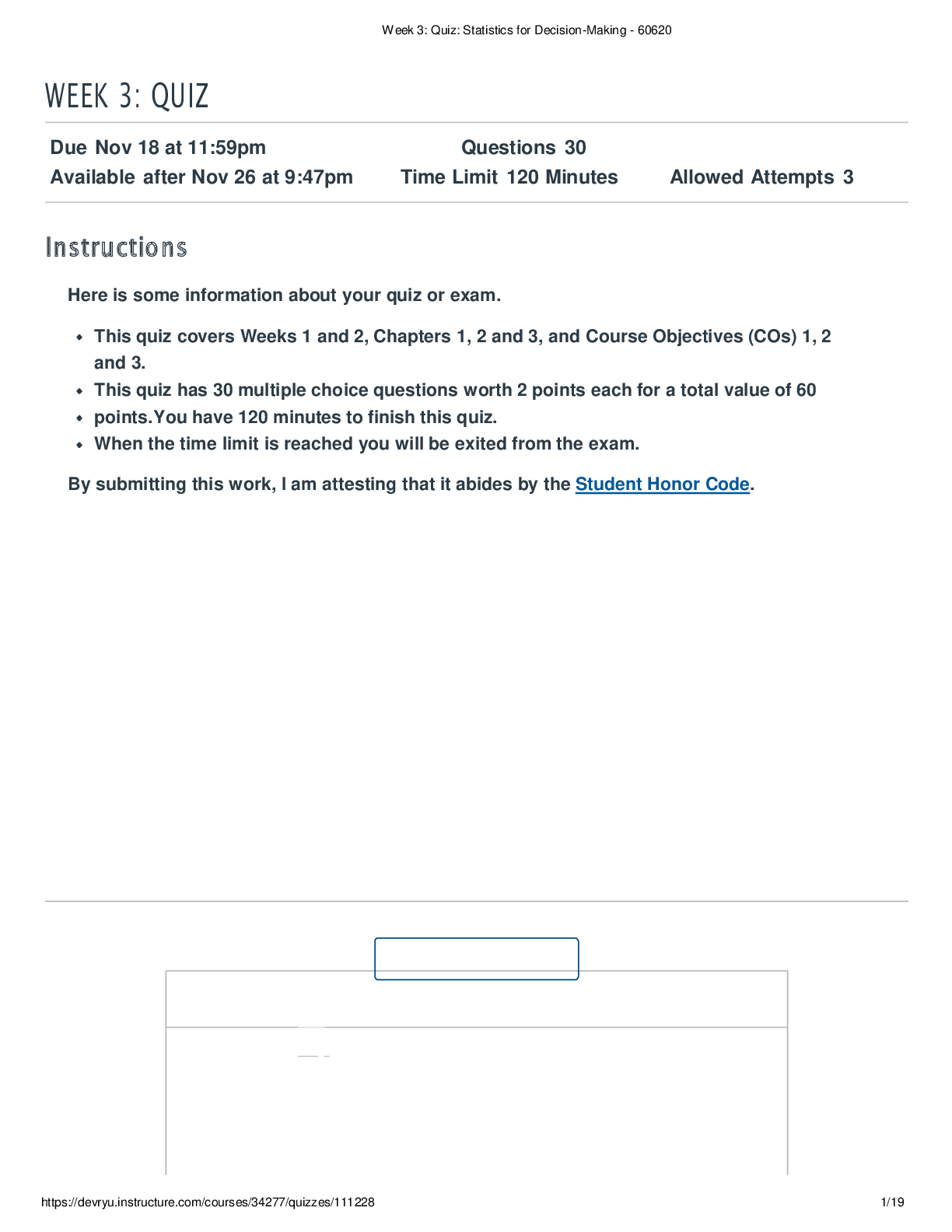

.png)











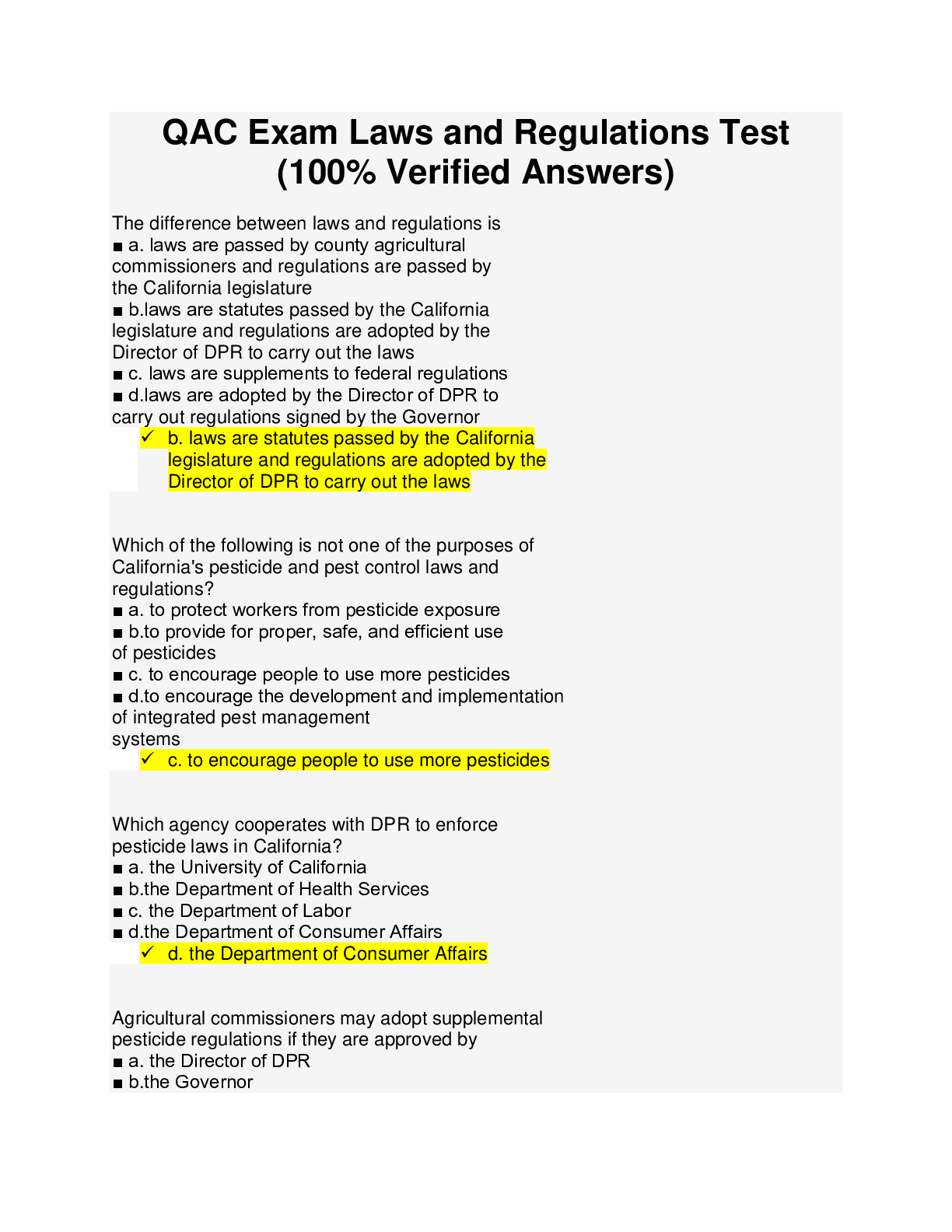
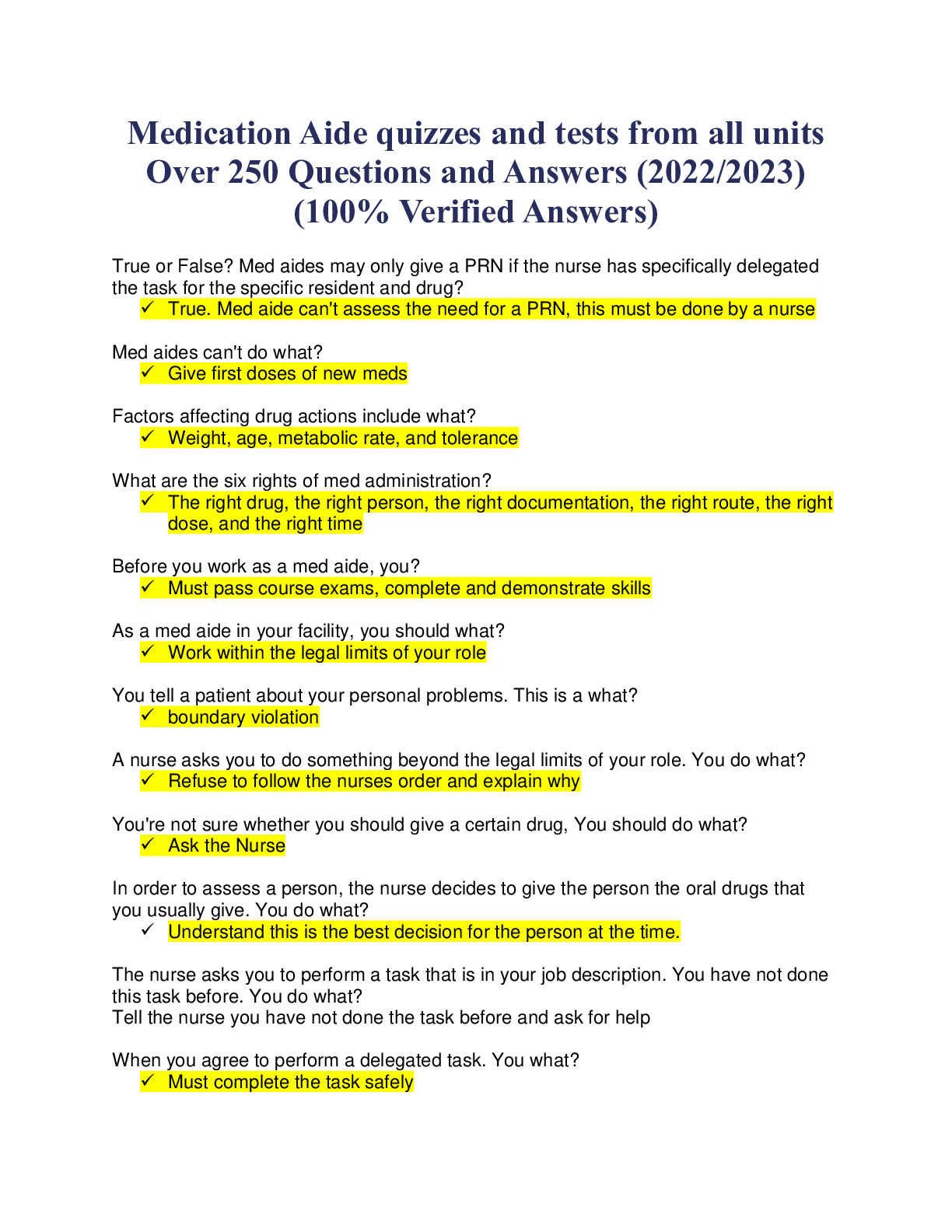
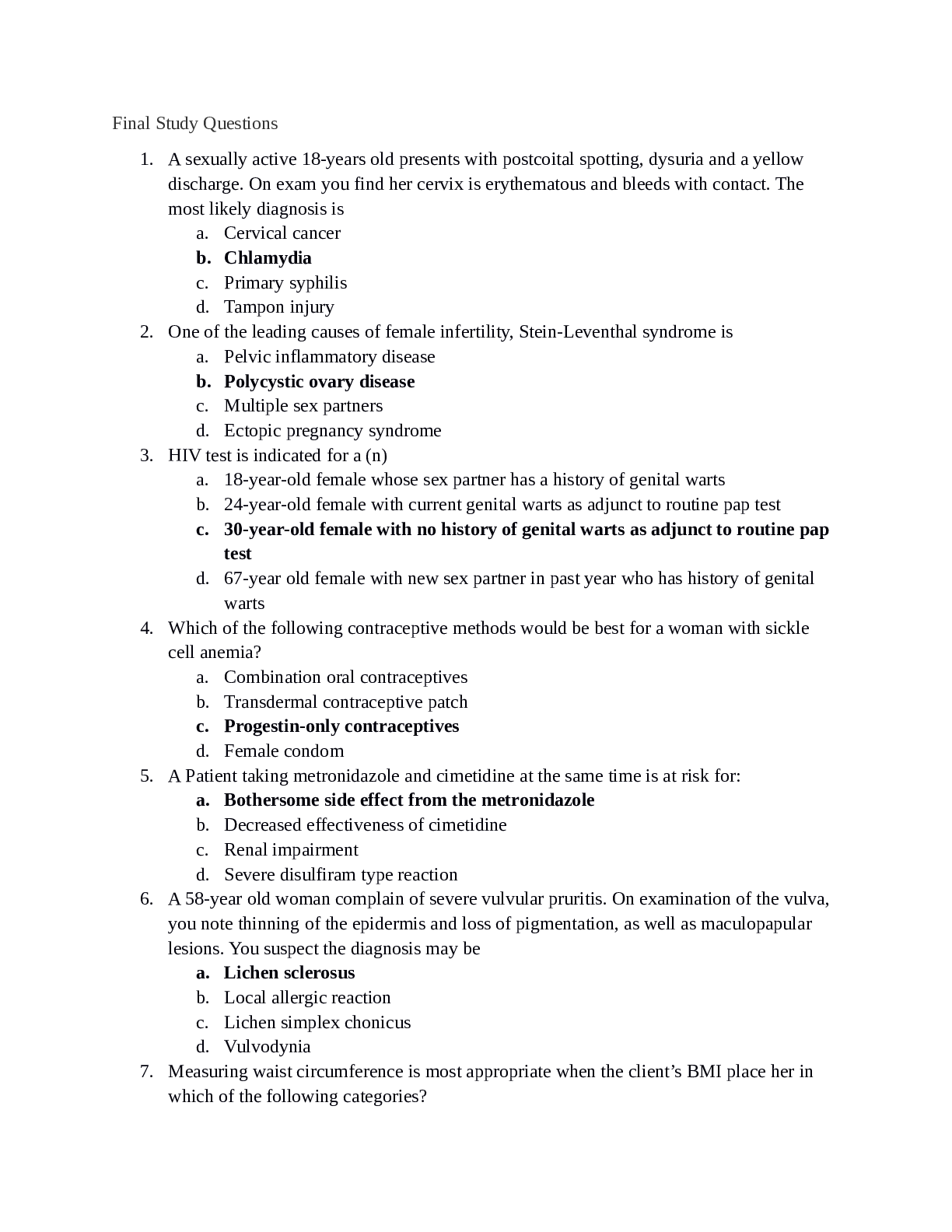
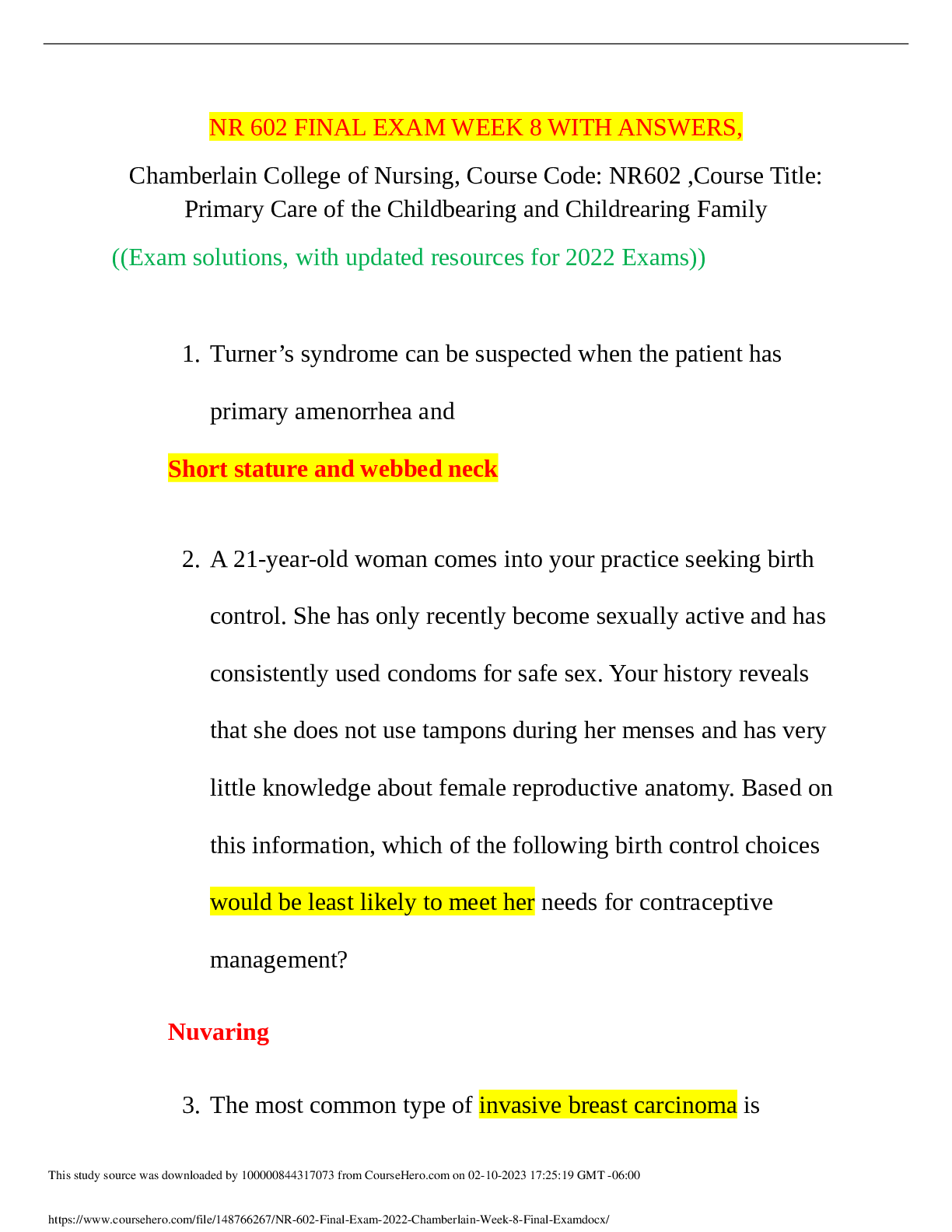
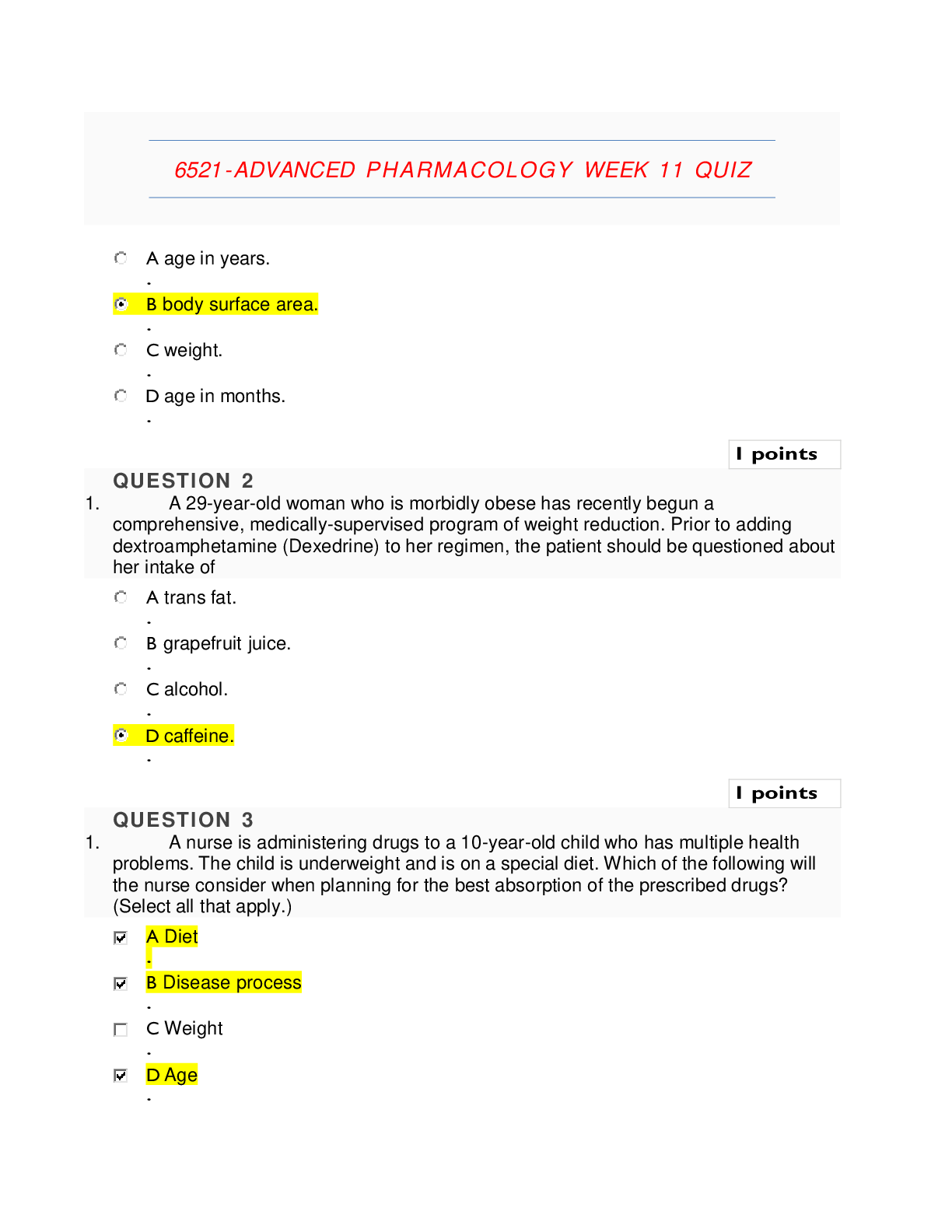
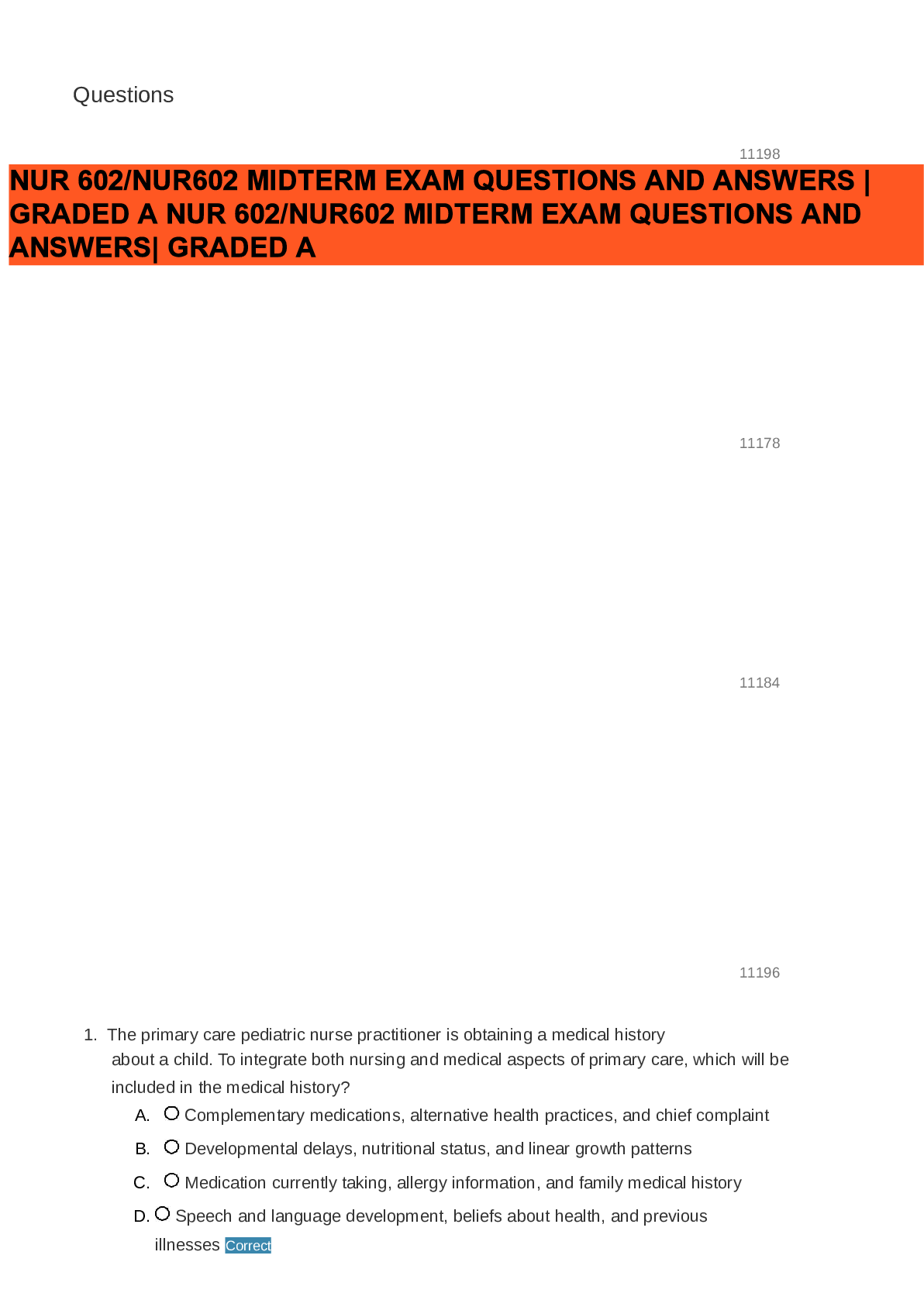
 (1).png)
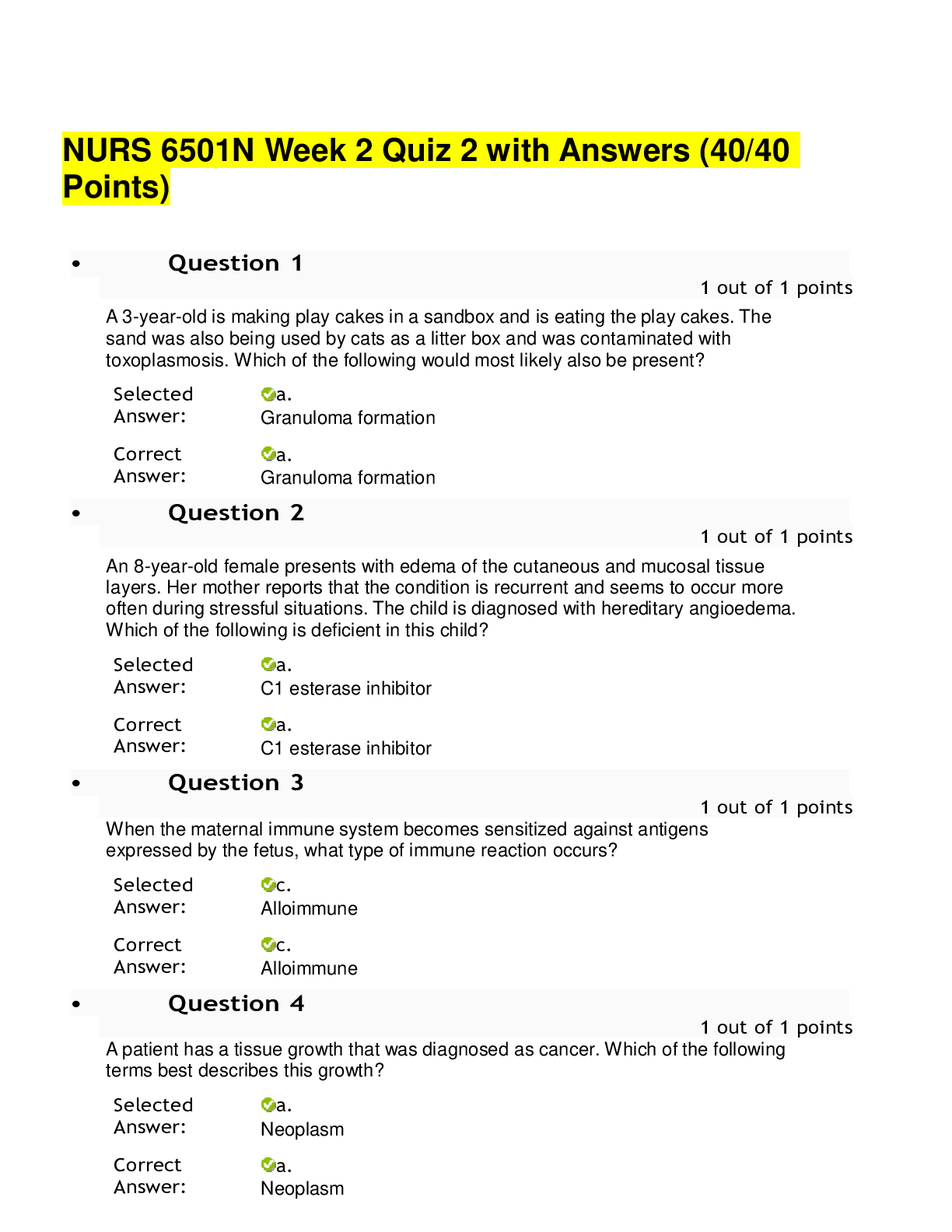
.png)
.png)





